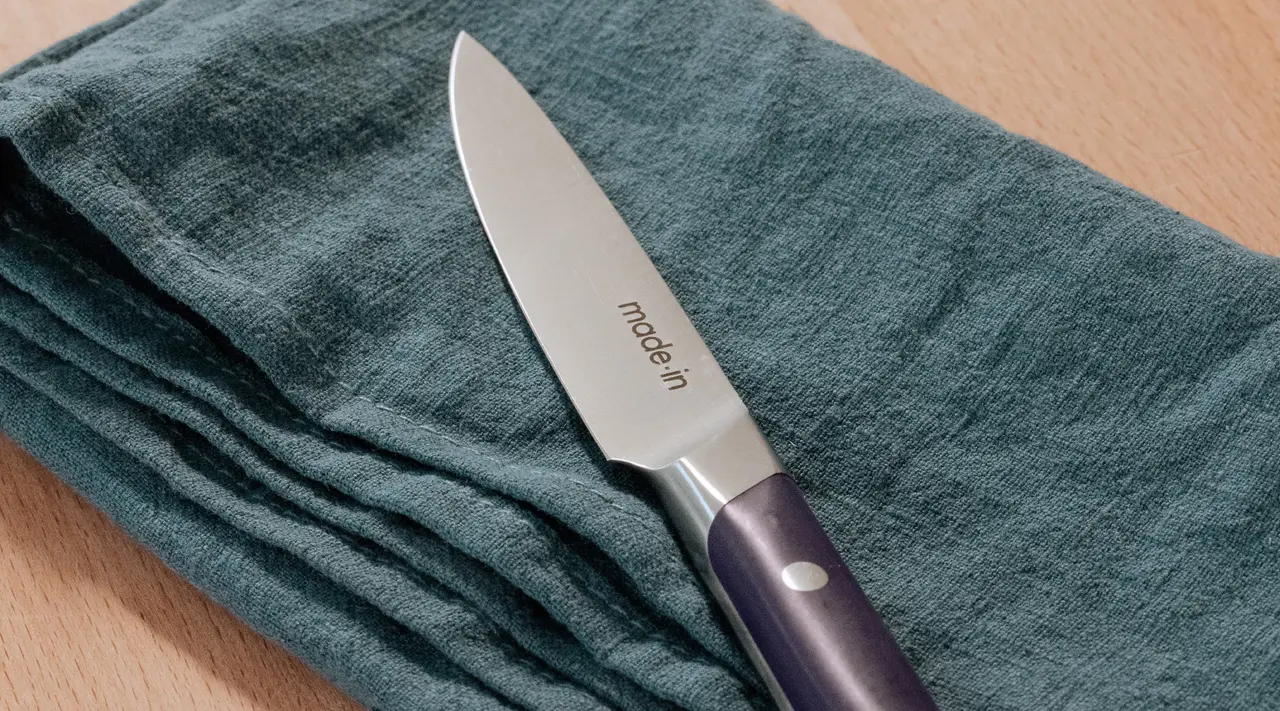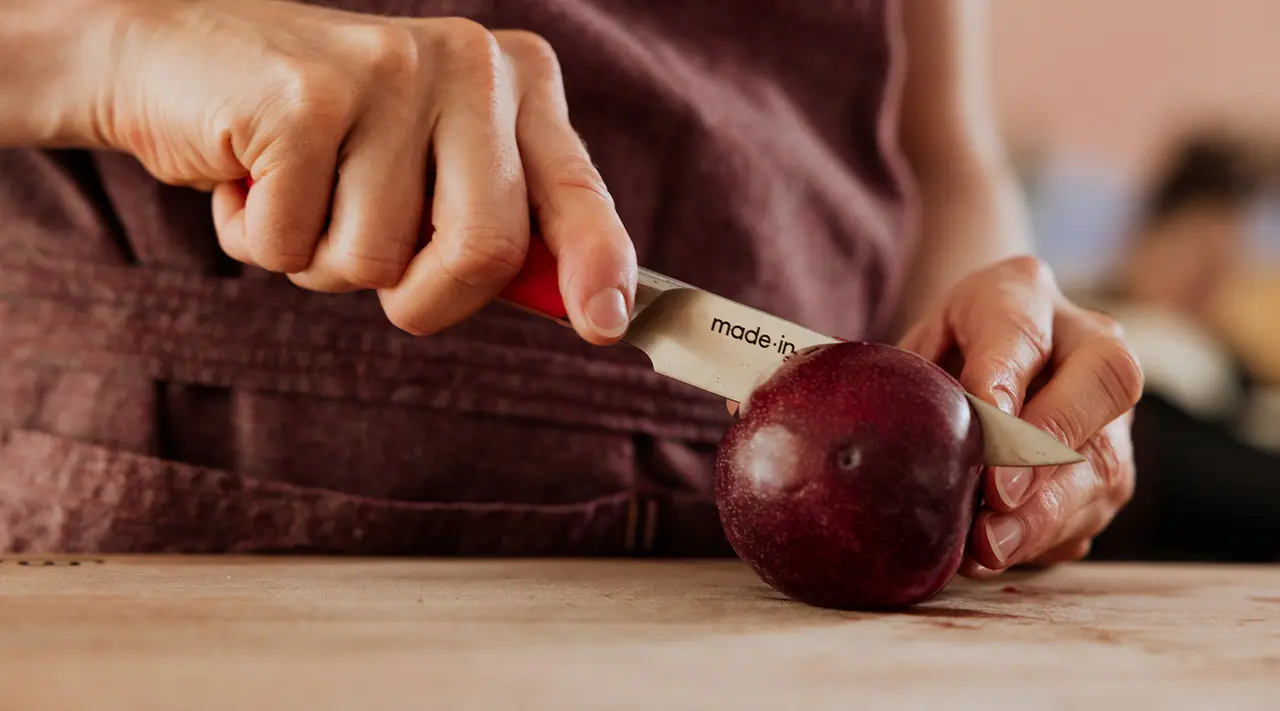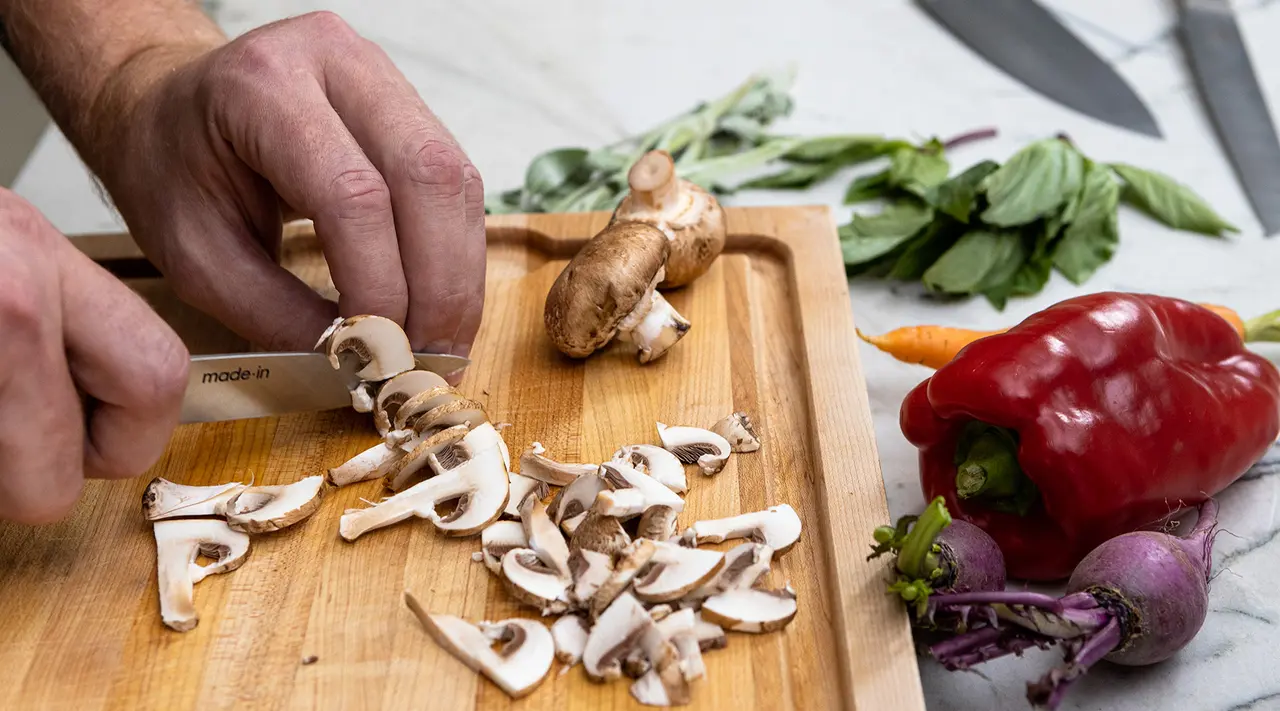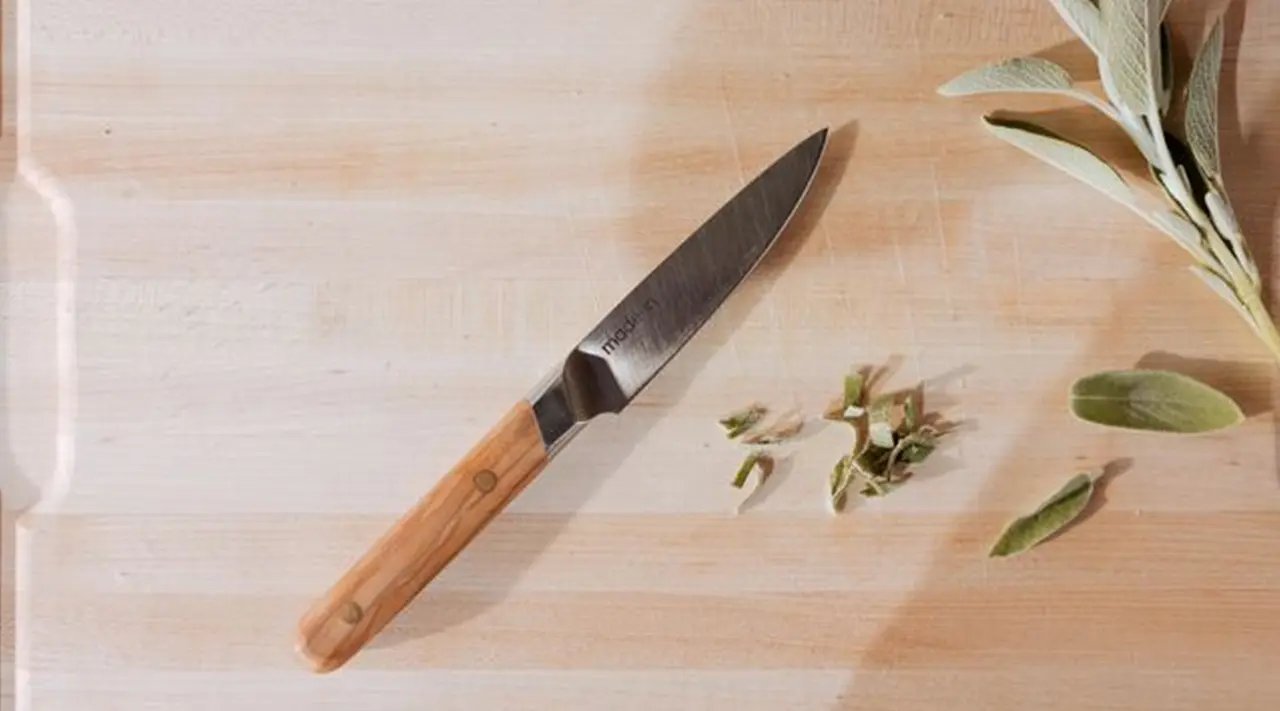In the case of the paring knife, the old cliché rings true: good things come in small packages. An essential in any kitchen, the short, non-serrated paring knife is used for intricate or precision work, ranging from dicing a shallot to delicately peeling an apple.
Often (in our opinion, tragically) underutilized, paring knives can perform many of the same tasks as your trusty chef knife—in fact, there's a number of tasks for which it is uniquely suited.
What Is a Paring Knife?

Paring knives are small—typically under 8” total— and resemble a shrunk-down chef knife. Featuring a non-serrated, slightly curved blade that’s typically under 4”, these knives are ideal for handling smaller tasks in the kitchen —like cutting small vegetables, peeling fruits, deveining shrimp, and slicing awkwardly-shaped ingredients.
What Is a Paring Knife Used For?

A good, sharp paring knife can handle many tasks in the kitchen, but some use are uniquely suited to this versatile, maneuverable blade. Here are eight ways to get the most use out of your paring knife.
Coring
Coring refers to the process of removing seeds or tougher, fleshy, undesired material from fruits, nuts, and vegetables. While there are designated coring tools, it’s easy to do this with a paring knife (not to mention, versatile tools are easier to justify than single-use ones).
To core an apple for example, set the fruit upright and hold it with your non-dominant hand. Cut around the stem in a circular motion, slicing all the way through to the underside of the apple. When you’ve sliced through, use your thumb to push the core out.
Alternatively, you can also make a series of four cuts around the stem and four around the base of the apple. Then, slide the blade through to connect them. Once the core has been loosened, it should easily twist or pop out.
Deveining
Deveining shrimp or prawns isn’t strictly necessary before cooking, but many chefs like to remove the digestive tract for presentation purposes.
To devein a shrimp, make a shallow incision along the back of the shrimp to expose the vein (it should be black or blueish-gray). Use the tip of the knife to pull the vein up and out in one piece. Be sure to wash your paring knife before using it again to prevent contamination.
Hulling
Similar to coring, hulling removes the inedible top of a fruit, specifically strawberries.
To hull a strawberry, grip the paring knife high up the blade so the flat of the blade is held between the side of your index finger on the bottom and your thumb on the top. Insert the blade just below the stem of the fruit, then slowly carve out a shallow, cone-shaped core of the top of the strawberry. Discard the stem and cut strawberries as desired.
Peeling
Because of its small size, a paring knife is ideal for peeling, when you need maximum control in order to remove only the skin of an ingredient. It can be used for a fruit as uniform as a kiwi to an oblong, slightly irregular butternut squash.
To peel a fruit, hold the knife close to the blade with a relaxed, steady grip, place your thumb on the fruit a couple inches in front of where you want to peel, then carefully pull the blade towards you as you move your thumb around.
Mincing and Dicing
Though a chef knife is typically better suited to mincing or dicing larger ingredients like peppers or onions, the small stature of paring knives is useful for processing smaller ingredients like shallots or garlic.
Mincing garlic is a great way to practice basic knife skills, and using a Paring Knife can be a good way to get used to handling a Knife in this fashion. Check out our guide to cutting garlic to learn how to do it properly.
Scoring
Cooking certain cuts of meat or baking a loaf of bread often involves scoring, or cutting very shallow slits on the surface of your ingredient, which allows steam to escape as bread bakes in the oven or can be used to make patterns in the final product.
While you can use any of our knives to score, the precision of our Paring Knife lends itself particularly well to this task. When used on certain cuts of meat, scoring can increase the Maillard reaction during cooking and allow for the infusion of aromatics like ginger or garlic.
Segmenting/Supreming
A chef knife may be best for breaking down chicken, but it can prove unwieldy when segmenting smaller citrus. Also called supreming, this delicate process involves removing not only the peel, but the white interior pith from wedges of citrus fruits.
For best results, make sure your paring knife is very sharp. First, remove the top and bottom of the citrus, then remove the peel, working your way around the fruit. Try to take as much of the white pith off as possible and remove any remaining once the citrus is fully peeled. Then, rest the fruit on its side and cut towards the center on either side of the membrane. Remove the sliver of fruit and repeat until fully segmented.
This is a time consuming process, but it’s worth the work for a flawless, pith-free presentation.
Trimming
Even larger ingredients that are typically broken down by a chef knife—like celery, carrots, poultry, or seafood—benefit from paring knives for smaller tasks. Jobs like trimming the leaves and stems from carrots or celery or removing fat, excess bones, or tendons from chicken or seafood are all tasks best handled by the dexterity of a paring knife.
How to Hold a Paring Knife

Handling a Paring Knife is much like holding any other Knife. In general, a relaxed but firm grip that keeps the knife from slipping with the thumb high on the flat side of the blade is best, but a Paring Knife is capable of a variety of techniques that sometimes require moving the grip further up the blade. Use a grip that feels comfortable but is also secure to give you the most control over your blade.
Ready to Chop?
When it comes to precision and control for the tasks listed above and others, you’ll find that this little knife is an indispensable part of your knife block.
Like all of our knives, our Paring Knives are full-tang and fully-forged, meaning that they’re hammered from one piece of stainless steel that runs all the way through from the tip of the blade to the base of the handle. This yields a balanced, sturdy knife that won’t snap at the handle.
























